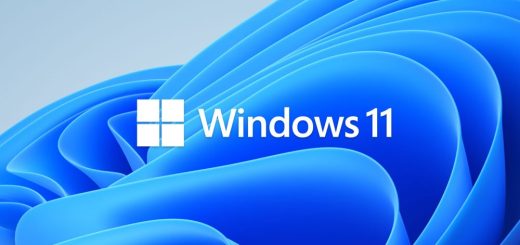How to Handle Windows Server 2012 R2 End of Life
Windows Server 2012 and 2012 R2 officially reached their end-of-life (EOL) on October 10, 2023. This means Microsoft has ceased providing regular security updates, non-security updates, and technical support for these products. If you still have servers running this operating system, they are exposed to significant security vulnerabilities and compliance risks.
This guide provides a straightforward overview of your options and outlines a clear path forward to secure your infrastructure in a post-2012 R2 environment.
Key Takeaways
- EOL Has Passed: As of October 10, 2023, Windows Server 2012 R2 no longer receives free security updates, leaving systems vulnerable.
- Core Options: Businesses must choose one of three paths: migrate workloads to a cloud platform like Microsoft Azure, perform an in-place upgrade or clean installation to a newer on-premises Windows Server version (like 2022), or purchase Extended Security Updates (ESUs) as a temporary measure.
- Plan and Act: Organizations should use a comprehensive migration plan to assess application and hardware compatibility, minimize operational downtime, and ensure a secure transition to a modern, supported infrastructure.
Countdown to Closure: Windows Server 2012 R2’s Final Chapter

Understanding the End of Life and Its Risks
The end-of-life milestone is not just a date on a calendar; it’s a critical security boundary. Continuing to operate Windows Server 2012 R2 without a support plan in place has direct consequences.
The End of Updates and Support
With standard support terminated, any new vulnerabilities discovered in Windows Server 2012 R2 will not be patched by Microsoft. This leaves your servers as easy targets for malware, including ransomware. Furthermore, your IT team can no longer receive technical assistance from Microsoft if they encounter issues with the operating system.
Post-Support Security and Compliance Risks
Running an unsupported OS creates immediate challenges:
- Compliance Violations: Many regulatory frameworks (like PCI-DSS, HIPAA, and GDPR) mandate that all systems run on vendor-supported software that receives security patches. Failing to do so can result in failed audits, fines, and loss of certification.
- Security Vulnerabilities: Unpatched flaws can be exploited by threat actors, potentially leading to data breaches, system downtime, and significant financial loss. The impact of exploits on unsupported systems, such as the WannaCry ransomware attack, serves as a powerful reminder of these risks.
Embracing Change: Preparing for a World Without Windows Server 2012R2

With Windows Server 2012 nearing the end of its tenure, it is imperative for businesses to take decisive steps towards modernization. Transitioning to an updated iteration of the Windows Server operating system or navigating towards Microsoft Azure’s cloud offerings is not merely a choice, but a critical requirement for enhanced server performance and capabilities.
Migration and Upgrade Strategies
When embarking on the migration plan from Windows Server 2012R2 to the latest iterations or cloud environments, one is confronted with a variety of options. Choices range from performing an in-place upgrade to executing clean installations, or transitioning onto new server hardware—each providing its unique mix of advantages and factors to consider.
Leveraging Extended Security Updates (ESUs)
As transitions unfold, Extended Security Updates (ESUs) serve as a formidable defense against the constant evolution of cyber threats. These purchasable ESUs offer an extended support window, granting time to strengthen defenses and prepare for upcoming changes while addressing bug fixes. Updates to online technical content are vital in ensuring the continued security and efficiency of your systems during this period.
Modernization Paths: Your Key Options
To address these risks, you must transition your workloads off Windows Server 2012 R2. Here are your primary options.
1. Migrate to the Cloud with Microsoft Azure
Migrating your servers to Azure is the path Microsoft most strongly recommends. This approach shifts the responsibility for hardware management to the cloud provider and offers unique benefits for this transition.
- Benefits of Migrating to Azure:
- Included Extended Security Updates: When you move your 2012 R2 workloads to Azure Virtual Machines, the ESU licensing is included at no additional cost for up to three years (until October 13, 2026). You only pay for the Azure compute and storage resources you use.
- Enhanced Security: Leverage modern cloud-native security tools like Microsoft Defender for Cloud and Azure Sentinel to protect your workloads.
- Scalability and Modernization: Azure provides a platform to not just run your existing servers but also to modernize your applications using services like Azure SQL, PaaS, and containers.
- Helpful Tools: Azure Migrate is a dedicated service that provides a centralized hub for discovering, assessing, and migrating on-premises servers to Azure.
2. Upgrade On-Premises Servers
If you prefer to keep your infrastructure on-premises, upgrading to a modern, supported version of Windows Server is essential.
- Target OS: Windows Server 2022: The current standard for on-premises deployments is Windows Server 2022, which offers advanced multi-layered security, improved performance, and hybrid capabilities with Azure. The next version, Windows Server 2025, is also on the horizon.
- Understanding Upgrade Paths:
- In-Place Upgrade: A direct in-place upgrade from Windows Server 2012 R2 to 2022 is not supported. This path requires a series of “hops” (e.g., from 2012 R2 -> 2016 -> 2019 -> 2022), which is complex and can introduce instability.
- Clean Installation (Recommended): The preferred method is a clean installation, also known as a “swing migration.” This involves setting up a new server with Windows Server 2022 and then migrating roles, features, and data from the old server. This ensures a stable and optimized environment.
- Helpful Tools: The Windows Server Storage Migration Service is a tool included in modern versions of Windows Server that makes it significantly easier to migrate file servers from older versions to new ones.
3. Purchase Extended Security Updates (ESUs) for On-Premises Servers
If you cannot immediately migrate or upgrade, ESUs serve as a temporary bridge to protect your servers.
- How ESUs Work: ESUs provide security updates for up to three years past the EOL date, ending on October 13, 2026. They must be purchased in one-year increments. ESUs do not include new features, non-security updates, or technical support.
- Deployment: For on-premises servers, you can purchase and manage ESU licenses through Azure Arc. Azure Arc is a hybrid management tool that extends Azure’s management and security capabilities to your on-premises infrastructure.
Interim Security Measures for EOL Systems
If you must run a 2012 R2 server while planning your migration, it should be treated as inherently insecure. Isolate it and apply compensating controls:
- Network Segmentation: Isolate the legacy server from the rest of your network using VLANs or firewalls.
- Stricter Firewall Rules: Restrict all network traffic to and from the server to only what is absolutely essential for its function.
- Intrusion Detection/Prevention Systems (IDS/IPS): Closely monitor traffic to and from the server for any signs of malicious activity.
- Application Whitelisting: Use tools like AppLocker to ensure that only approved, necessary applications can run on the server.
Crafting a Comprehensive Migration Plan
A successful transition requires careful planning. Follow these steps:
- Discover and Assess: Create a complete inventory of all remaining Windows Server 2012 R2 instances. For each server, document its roles, applications, and dependencies.
- Check Compatibility: Verify that your critical applications and existing hardware are compatible with your target platform, whether it’s Windows Server 2022 or Azure.
- Choose Your Path: For each workload, decide on the best migration path (Azure, on-prem upgrade, etc.). Not all servers need to follow the same path.
- Plan to Minimize Downtime: Schedule migrations during off-peak hours. Use tools like Storage Migration Service that can cut over with minimal disruption. Ensure you have a complete, tested backup before you begin.
- Invest in Staff Training: Ensure your IT team is prepared to manage the new environment, whether it involves learning Azure fundamentals or the new features in Windows Server 2022.
Summary
The end of support for Windows Server 2012 R2 is a critical security and operational deadline. Inaction is not a viable strategy. Your organization’s primary options are to migrate to Azure for enhanced security and scalability, upgrade your on-premises infrastructure to a supported OS like Windows Server 2022, or use Extended Security Updates as a temporary bridge. Proactive and thorough planning is essential to ensuring a secure, compliant, and seamless transition away from this legacy platform.
Frequently Asked Questions
What happened to Windows Server 2012 R2 after October 10, 2023? After this date, Microsoft stopped providing free security patches and technical support. Systems still running the OS are now vulnerable to new security threats and may not meet compliance requirements.
Can I still get support for Windows Server 2012 R2? Yes, but only by purchasing Extended Security Updates (ESUs). ESUs provide security updates only (no new features or support) for up to three years. You can get them by migrating to Azure (where the ESU license is included) or by purchasing them for on-premises servers via Azure Arc.
What are my options if I want to stay on-premises? Your primary option is to perform a migration to a supported version, such as Windows Server 2022. If that is not immediately possible, you must purchase Extended Security Updates to keep servers patched while you plan the upgrade. ESUs are available until October 13, 2026.
How can I ensure my on-premises servers are secure after purchasing ESUs? To deploy and manage ESUs on-premises, you should use Azure Arc. This integrates your servers with Azure’s security and governance plane, allowing for streamlined patch management and monitoring, which significantly improves your security posture.
What are the key considerations when planning a migration from Windows Server 2012 R2? The key considerations are application and hardware compatibility with the new platform, minimizing downtime during the transition, ensuring regulatory compliance, and creating a detailed project plan with clear stakeholder communication.




Recent Comments